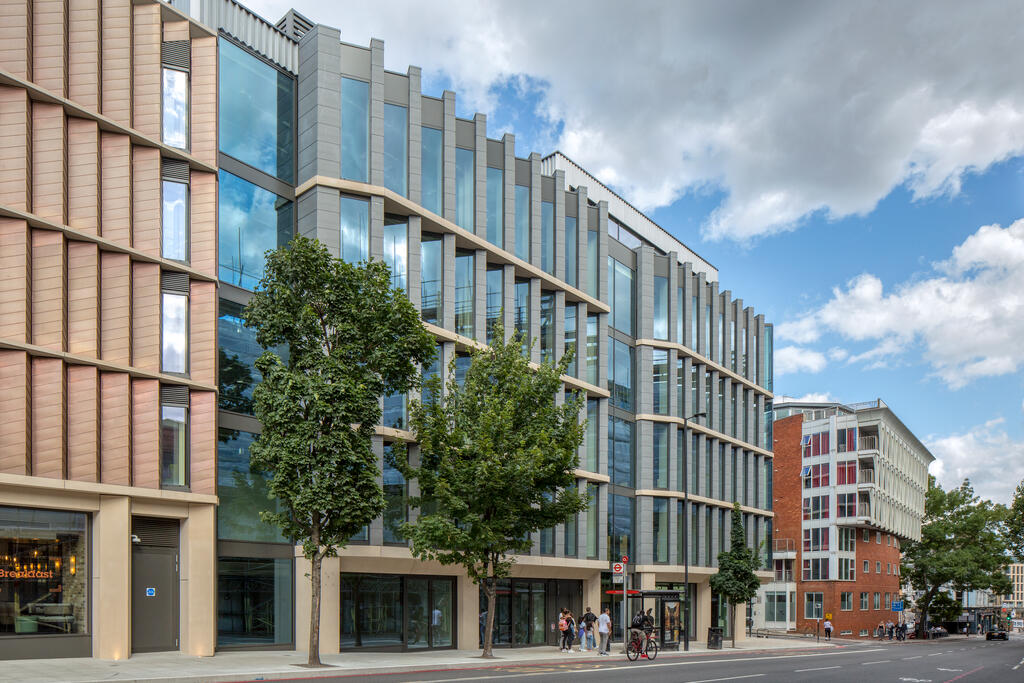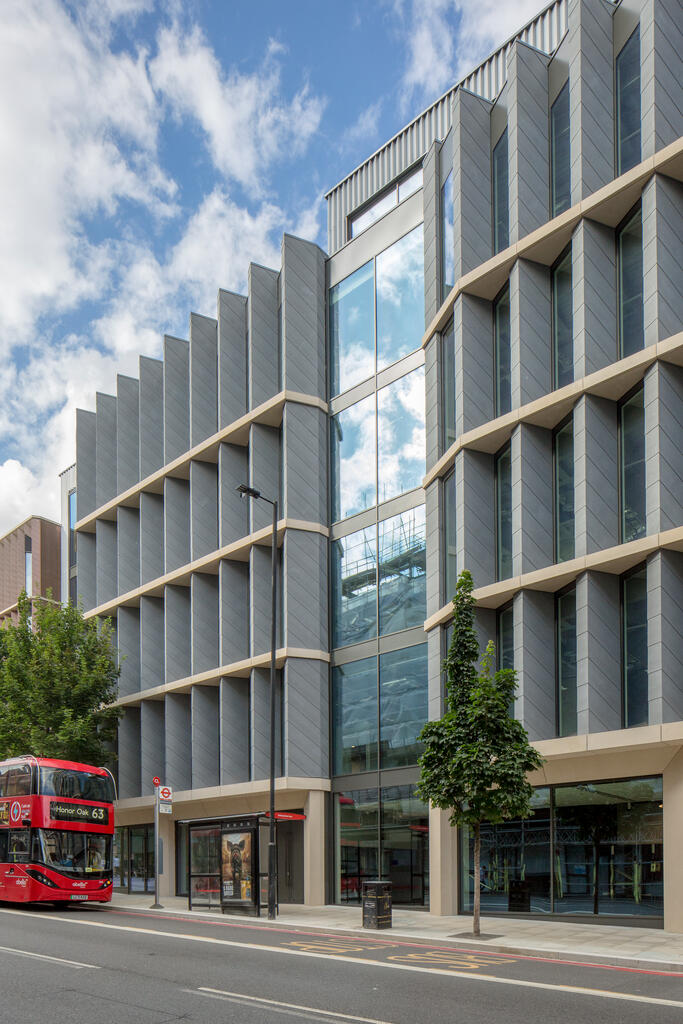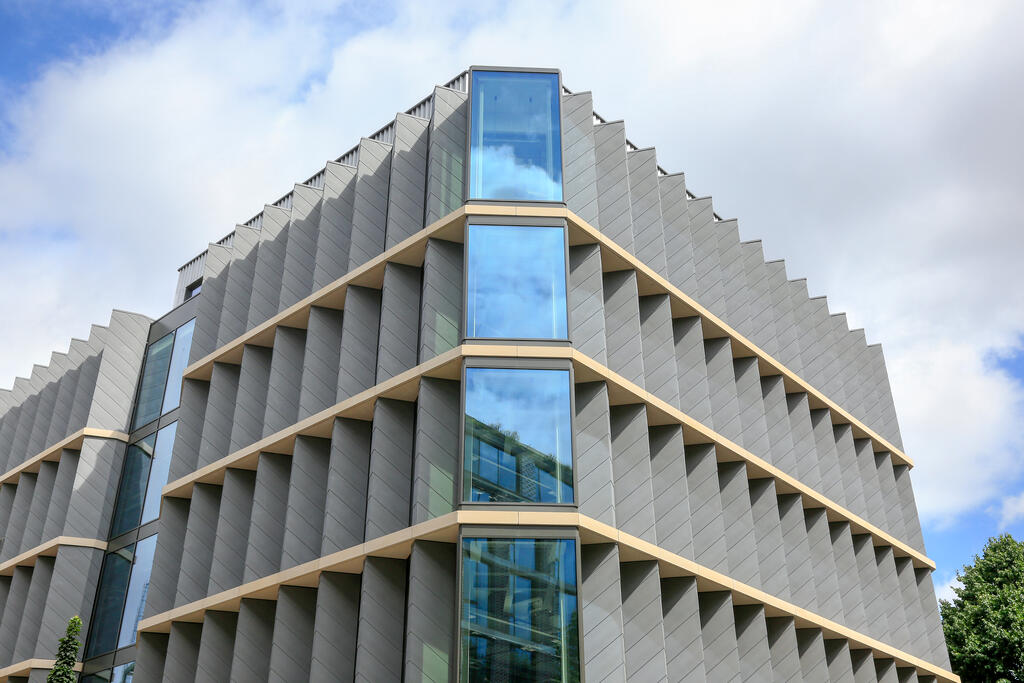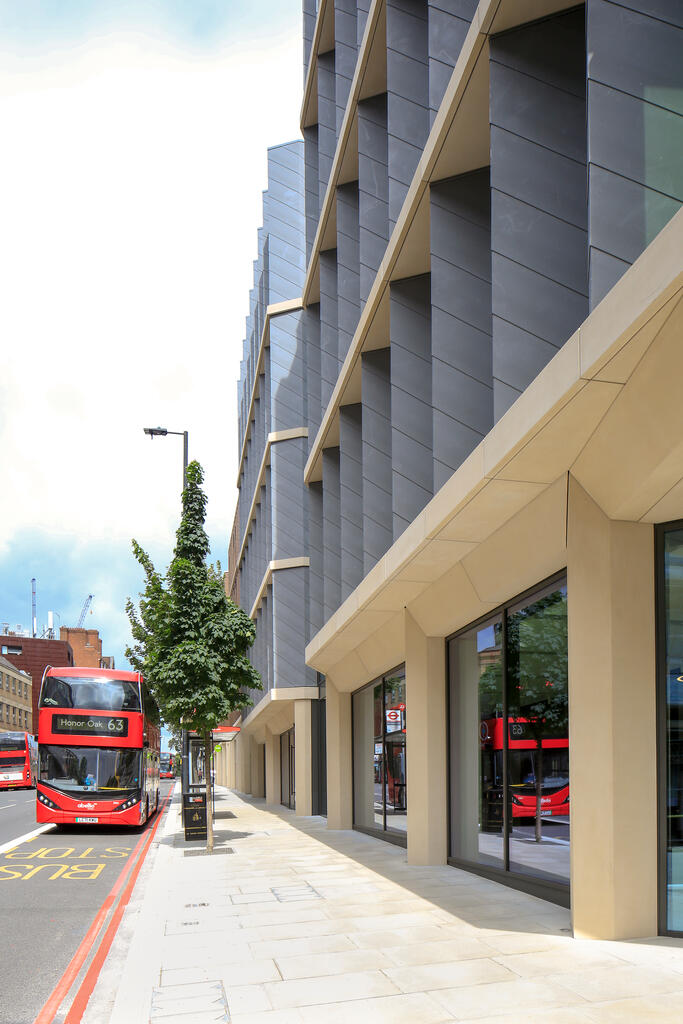
68-86 Farringdon Road, London (UK)
- Location United Kingdom
- Architects Sheppard Robson
- Technique(s) VMZINC Shingles
- Aspect(s) QUARTZ-ZINC
- Application Type Facade
- Contractor(s) EDM Spanwall Facades Ltd
- Copyright VMZINC
Would Charles Dickens recognise Clerkenwell, the London borough used as the setting for his novel Oliver Twist, if he walked through it today? A century and a half of infrastructure work has transformed the shabby suburb into a soughtafter district located just a stone’s throw from the City.
The River Fleet, once an open sewer, has been buried under the road, and the railway has made the area a place of transit, whose appeal has been enhanced by the opening of Crossrail, a strategic metropolitan connection which opened in 2015.
In this changing sector, the project designed by the Sheppard Robson agency is taking the place of a three-storey car park built in the 1980s.
If the transformation of a parking facility into a mixed-use complex combining services and accommodation reflects new urban concepts, the dense context called for meticulous urban integration work to protect local residents.
The monolithic volume of the car park has been split into two units, clearly distinguishing between the office and hotel sections. Common to both parts of the project, the elegant pleating of the façades combines aesthetics and practicality, directing the eye towards the centre of the street to limit the delicate problem of being overlooked in a narrow lane.
This urban constraint was coupled with a major structural constraint: the eastern part of the plot is in fact built on top of the railway tunnels.
As it was impossible to stop the trains and create new foundations, the architects kept the car park foundations, reinforcing them in places. On the surface, they did everything they could to lighten the structures.
The brickwork, typical of the area but too heavy for the structure, has been replaced by lighter metal cladding that identifies the two purposes of the structure.
QUARTZ-ZINC® covers the offices, harmoniously matching the bronze of the hotel. The architects made the most of the corner position to enhance the expressive potential of the spines, which they have oriented in opposite directions to give the impression of an opaque surface cut only by the corner glazing. The directing of the panel joints towards the ground further accentuates this dynamic effect borrowed from kinetic art.
If a passer-by thinks that the building is vibrating, this is due entirely to the visual effect of its covering as the whole structure has been laid on a foam that absorbs the vibrations generated by the trains.





